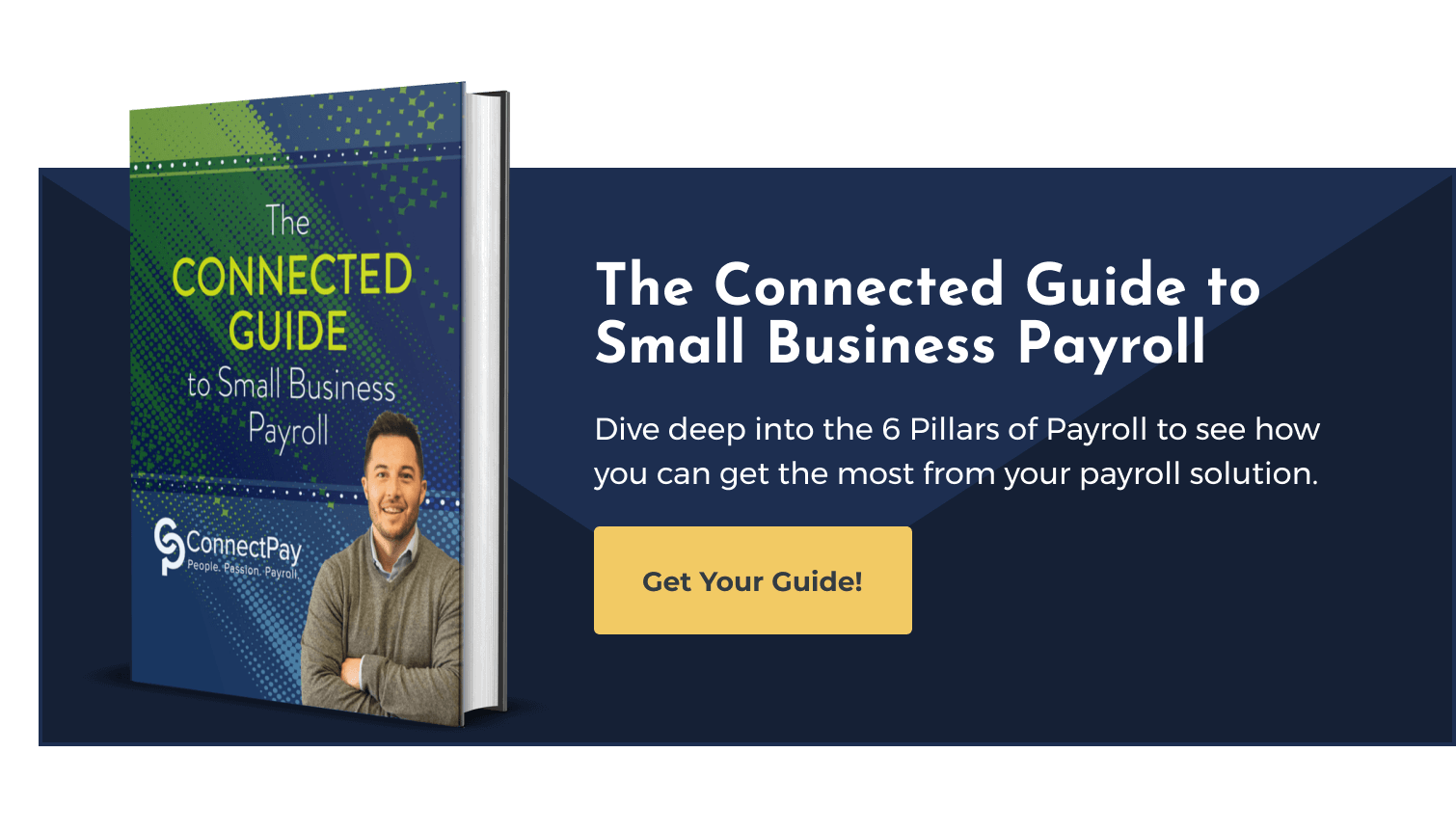Payroll Trends for 2023: What Should You Look Out For?

It’s no secret that 2020 was a landmark year for the way businesses operate.
Some companies embraced remote working without hesitation. Others couldn’t wait to get back into the office. But there’s been a definite shift.
Employees want a more flexible working situation, and the gig economy continues to grow as more people see the benefits of controlling their own work schedules and where they work and live.
What do these changes mean for payroll and HR industries?
Companies are looking for efficient and seamless solutions to manage employees, pay schedules, and tax compliance.
With a fast-changing economy and evolving business operations, payroll services and in-house teams must embrace technology and automated processes and find ways to keep employees engaged and productive.
This article highlights the trends we’ll see in the payroll industry in the coming year and how they might affect you, so you can get out in front of challenges and drive growth in your business.
Payroll Trends for 2023
Late and inaccurate payments, failure to comply with tax laws, and cumbersome payroll processes are a recipe for disaster.
Not only will the health of your business suffer; you’ll cause unnecessary stress, and your employees will likely leave.
It’s essential to stay ahead of payroll trends.
With the undeniable shift towards a more remote workforce and the continued adoption of technology, manual payroll methods don’t cut it anymore.
Cloud-based software is projected to grow to $13.3 million by 2026, an increase of 6.8% from 2019.
Instead of juggling payroll processes, employee benefits, tax deductions, and more, you could be focusing on driving growth in your business.
Working with a payroll provider like us at ConnectPay is the best way to streamline your payroll processes, remain tax compliant, and pay your employees accurately and on time.
If you want to know more about how we work with small businesses, check out our free guide, the Connected Guide to Small Business Payroll.
1. Increased Gig Economy
The gig economy is growing at an astronomical rate, expanding 3x faster than the total US workforce.
More workers are moving towards freelance work that allows them the flexibility to work from anywhere, set their own schedules, and have a better work/life balance.
Freelance work opens up opportunities for companies too. If you want to hire the best talent and don’t mind where the talent lives or works, you can. It does, however, pose a problem for managing payroll.
Related: Do I Need a Payroll Service? 6 Reasons You Need Professional Payroll Help
You now need to think about how you hire and handle payroll for international employees, and you’ll need experts on your team who know the ins and outs of employment laws, payroll regulations, and tax legislation of several countries.
One option is to classify remote workers as independent contractors.
Working with a payroll provider who can help you classify workers correctly, ensure you remain compliant, and connect you with local experts is a huge plus. Modern payroll software can manage dynamic workforces better than legacy or manual payroll systems.
2. Mobile Employee Transactions
The faster technology evolves, the more streamlined payroll processing becomes. And part of managing a dynamic workforce means making your employees’ lives easier and giving them access to their data.
Through mobile platforms, employees can access their dashboards for self-service transactions.
These systems allow employees on-demand access to copies of their W2s, view how much PTO they have available, or change voluntary contribution amounts.
That means: instead of printing potentially hundreds of documents, you can store all your records online. Additional features might include chatbots that can help employees with non-urgent requests.
For your employees, it’s quick, reliable, and they can instantly download reports and payroll data. For your business, mobile and self-service platforms streamline payroll and HR processes, giving HR professionals their time back to focus on more critical tasks.
3. The Stand Against Late Payments
Employees and freelancers alike expect real-time compensation from employers. What do late payments mean for you and your employee? In best cases, an apology and a resolution.
In the worst cases, it means rent or loans, or expenses aren’t paid, and food could potentially be off the table for some.
Employee satisfaction directly impacts retention rates, and one way to upset employees is by paying them late and inaccurately.
- 49% of workers will look for a new job after two payroll errors.
- 40% of small to mid-sized businesses incur IRS penalties for incorrect payroll filings.
Not only do payroll errors affect your employees, but they affect your business too. Unhappy employees are unproductive. They can’t concentrate on work if they’re worried about their finances.
To increase productivity, you need to engage and motivate employees.
You’re investing in your workforce when you invest in a payroll system that helps run payroll on time.
Pro tip: If you want to take this one step further, you could provide financial wellness programs to your employees. As part of the employee dashboard, you could provide financial planning, guidance, and counseling tips. Educate employees on how to take advantage of retirement plans and allocate their money well.
4. Cloud-Based Payroll and Automation
If employees accessing their dashboards on mobile devices is a step into the future, being able to do so from anywhere is even better.
Cloud-based capabilities allow businesses to access data on any device in any location via an internet connection.
Managing payroll from anywhere with a cloud-based payroll system or software gives employers and employees flexibility and minimizes costs. Also, it’s better for managing remote employees.
Not only can you run payroll from anywhere, but remote employees can access their payroll records and other online features from home.
Related: How Payroll Software Works: 5 Things To Know Before You Buy
Wouldn’t it be a weight off your shoulders not to manually calculate employees’ wages or salaries and tax deductions?
Cloud-based payroll systems are scalable, remove the need for paper records, report data accurately and in real-time, and provide automatic updates on compliance.
5. The All-in-One Solution
Making things easier and getting even better results is a double jackpot for any small business owner. You want to streamline your processes and do so without sacrificing accuracy.
Some payroll companies like ConnectPay offer HR services that integrate with payroll. There are a few benefits, such as:
- Hiring and onboarding: Hire the right people with help from robust application filters and detailed background checks. Then create employee handbooks for a seamless onboarding process so that you can build a culture of excellence.
- Flow of data: When payroll technology integrates with other systems, you create a seamless connection of data. Errors are reduced, and HR can spend less time on administrative work and more on keeping employees engaged and productive.
- Data accuracy: With data connects from one system to another, you can be confident that your reporting and analytics are accurate across multiple departments to make informed decisions.
- Employee engagement: Because employees have access to their data and everything is stored digitally; it’s less likely that you’ll pay them incorrectly. HR will deal with fewer queries and free up their time.
The most critical aspect of HR integration is compliance. Reducing risk, avoiding costly litigation, and maintaining compliance are crucial.
From tax updates to working time regulations, HR needs help keeping up. But with one data source, it’s easier to manage multiple data inputs without needing to print documents and upload them to various systems.
Note: All-in-one is not the same thing as one-size-fits-all. You still need a system tailored to your needs.
What Won’t Change in 2023
With all the technological advancements that continue to make everything faster and easier, it can be easy to forget that people and building relationships are still at the center of successful and efficient operations.
What do you do when you have an issue that a chatbot can’t solve? You call customer services and expect to talk to a representative.
But many companies are cutting back on human interaction and expect customers to follow phone tree menus to deal with their issues.
Also, many employees are disconnected from the increased isolation of remote work. They have to deal with siloed teams to get anything done.
With ever-changing regulations, state and local tax law updates, and more focus on employee rights, running payroll is challenging.
For small businesses, a payroll service that has experts on hand who answer the phone and give personalized support for their payroll needs is priceless.
Payroll Trends for 2023: The Future is Connected
Automated payroll? Yes. Automated customer service? No.
Some things still need a human touch. ConnectPay prides itself on excellent customer service. Through our connected model, you’ll get the following:
- Connected reps: Someone answers the phone when you call and answers even the most complex local regulatory questions.
- Connected partners: We provide connections to experts in 401ks, Workers’ Comp, and more.
- Connected data: The right information securely reaches those who can help streamline your payroll.
And how do we do it?
- Guide: With an expert guided business review to identify gaps and opportunities in your payroll process.
- Connect: Through tailored connections and optimizations, so your business operations flow seamlessly.
- Onboard: And a 7-day premium onboarding with Connected Rep guidance and support.
Want to see how else we help small businesses? Check out our free resource, The Connected Guide to Small Business Payroll.







